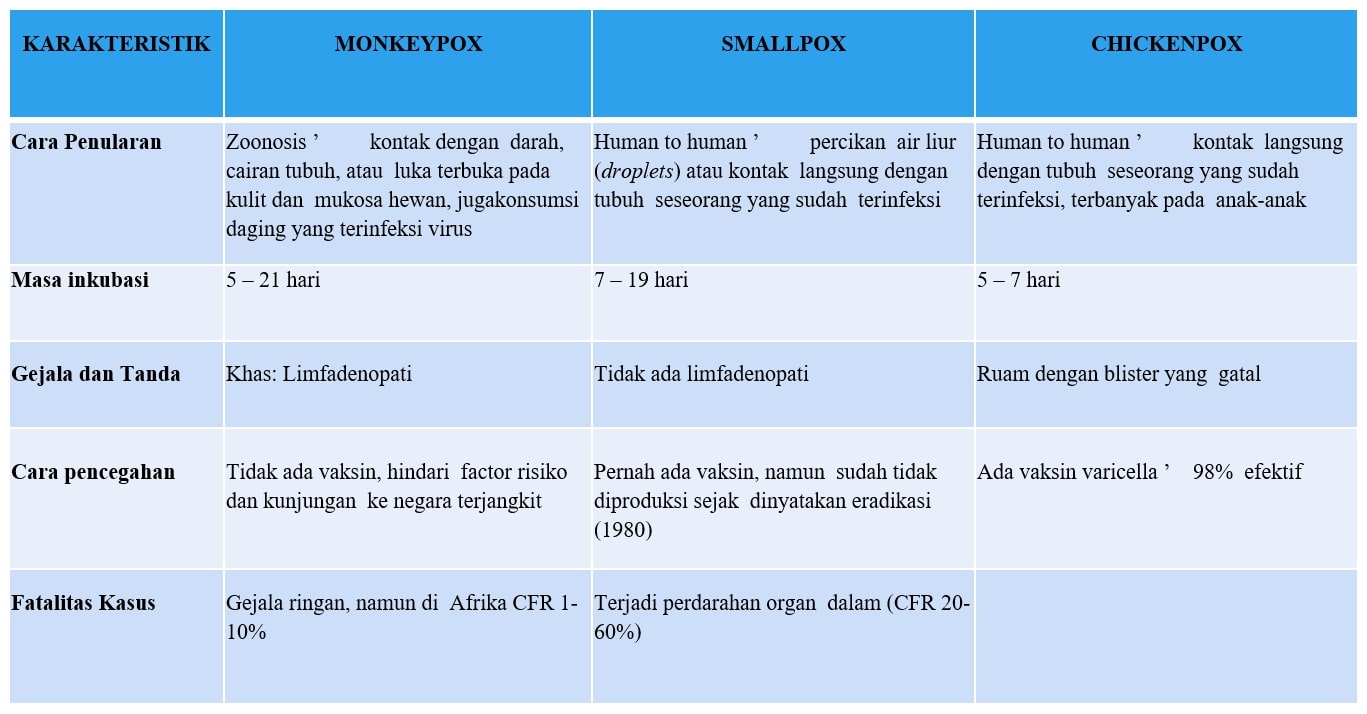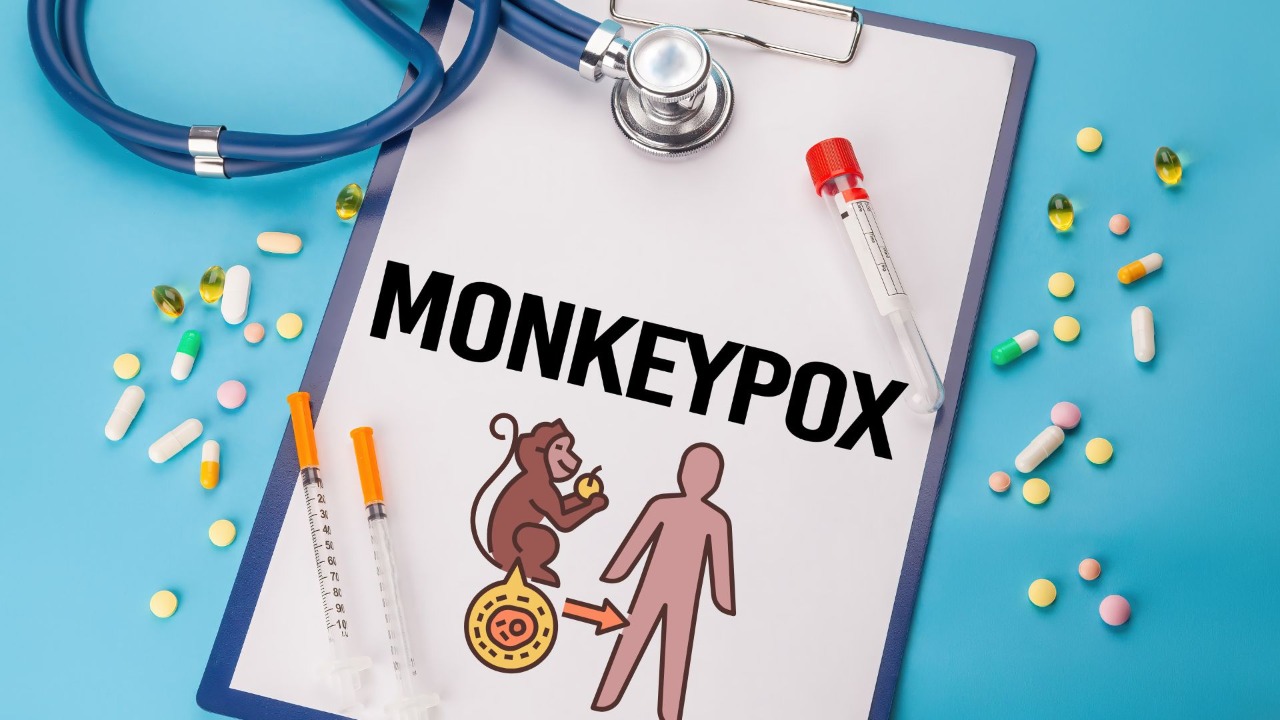Monkeypox
Monkeypox (monkeypox) is a disease caused by the monkeypox virus which is transmitted through animals but is currently being transmitted from human to human.
Case Finding
Monkeypox was first discovered in 1958 in Denmark when there were two such cases of smallpox appearing in a monkey colony kept for research, hence the name 'monkeypox'.
The first case of monkeypox in humans was found in 1970, namely in the Democratic Republic of the Congo. A 9-year-old child was exposed to the monkey pox, and since then cases of monkey pox in humans have often occurred in Central and West Africa.
May 9, 2019
Confirmed case of Monkeypox (MPX): A Nigerian citizen (endemic Monkeypox) visited Singapore on April 28, 2019, tested positive for the Monkeypox virus (MPXV) on May 8, 2019, there are 1 Case and 23 people who have close contact with him have been quarantined.
August 20, 2022
1 confirmed case in Indonesia. A person with travel history from the Netherlands, Switzerland, Belgium and France. Currently, Indonesia is intensifying the discovery of monkeypox cases and trying to prevent Indonesia from spreading this disease.
Monkeypox Transmission
You can become infected if you come into physical contact with a monkeypox sufferer or with contaminated items. Monkeypox is spread when a person has direct skin-to-skin contact or saliva splashes from an infected person, including during sexual intercourse.1
Monkeypox Symptoms
Incubation period: usually 6-16 days, but can range from 5-21 days
Prodromal phase (1-3 days):
- Fever
- Great headache
- Lymphadenopathy (swollen lymph nodes)
- Back pain
- Muscle pain and weakness
Eruption phase (Most infectious phase):
The rash or lesions on the skin usually start on the face and then gradually spread to other parts of the body; ranging from: red spots like smallpox (maculopapules), blisters filled with clear fluid (blisters), blisters filled with pus (pustules), then hardened (crusts) or scabs and then fall off. It usually takes up to 3 weeks for the period of the lesions to disappear and fall off.
Monkeypox is usually a self-limiting disease with symptoms lasting 14-21 days.2
Difference between Monkeypox, Smallpox and Chickenpox3

Treatment
Currently, there is no specific treatment available for monkeypox infection, but monkeypox outbreaks can be controlled. Smallpox vaccine, cidofovir, ST-246, and vaccinia immune globulin (VIG) can be used to control monkeypox outbreaks, but their numbers are still limited.4
Prevention5
- Implement clean and healthy living behaviors, such as washing hands with soap and water, or using alcohol-based hand sanitizer.
- Avoid direct contact with rats or primates and limit direct exposure to blood or undercooked meat.
- Avoid physical contact with an infected person or contaminated material, including bedding or clothing the patient has worn.
- Avoid contact with wild animals or consuming bush meat
- Travelers who have just returned from an infected area should immediately check themselves if they experience symptoms of sudden high fever, enlarged lymph nodes and skin rash, within < 3 weeks after returning, and inform their travel history
- Health workers should use gloves, masks and protective clothing when handling sick patients or animals.
References:
1. Monkeypox/ www.cfsph.iastate.edu 2013, CDC 2015, Updated: WHO June 2018
2. Kemenkes RI 2019, HTTP://INFEKSIEMERGING.KEMKES.GO.ID
3. N Engl J Med 2004;350;4:344-50
4. Centers for Disease Control and Prevention, National Center for Emerging and Zoonotic Infectious Diseases. : December 7, 2016




.jpg)